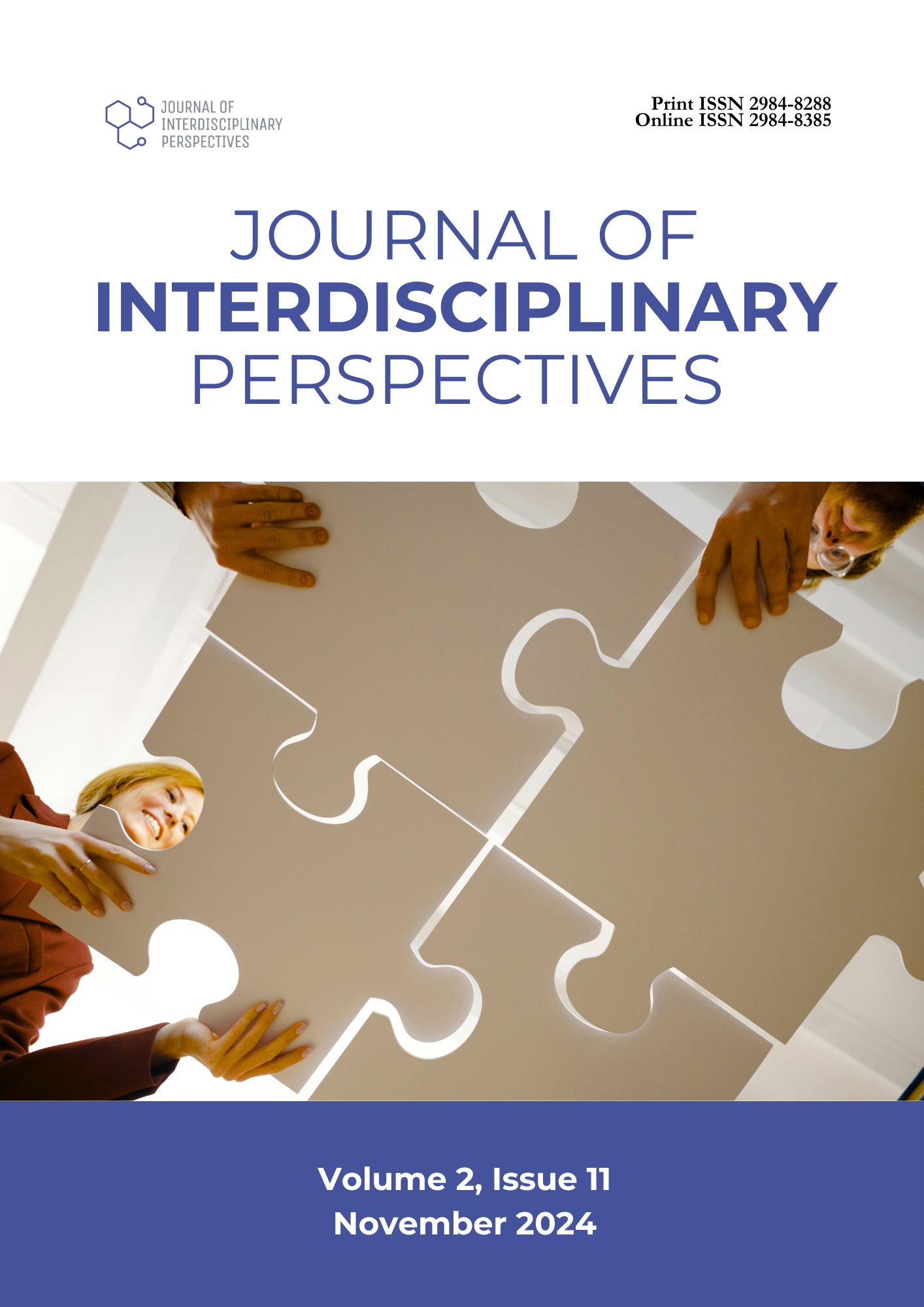Solid Waste Generation and Characterization in a State University
DOI:
https://doi.org/10.69569/jip.2024.0485Keywords:
Solid waste management, waste generation, waste characterization, Ecological Solid Waste Management Act, RA 9003, Marawi CityAbstract
This study investigated the solid waste generation and characterization at Mindanao State University (MSU) - Main Campus in Marawi City, addressing the critical issues of unsustainable waste management practices. Despite the recent establishment of waste management facilities in Marawi City, including a Central Material Recovery Facility (CMRF) and a Category 4 Sanitary Landfill (SLF), the campus and much of the city need help with effective waste disposal. This has led to environmental challenges such as clogged drainage systems, open dumping, and air pollution from waste burning. The study fills an essential gap in solid waste generation and characterization data, which is crucial for effective solid waste management (SWM) planning as mandated by the Ecological Solid Waste Management Act of 2000 (RA 9003). Using a descriptive-comparative research design, the study surveyed 216 units, including residential buildings, rental properties, commercial establishments, and university facilities. The findings reveal that the MSU-Main Campus generates 9438.011 kg of waste daily, with a per capita waste generation rate of 0.9371 kg/day— significantly higher than the national average. Residential buildings are the primary waste generators, contributing nearly half of the total waste, followed by lodgings. Waste characterization reveals a substantial proportion of non-biodegradable waste (38.29%), with biodegradable waste accounting for 35.46% of the total. These findings highlight the urgent need for systematic waste management strategies, particularly focusing on waste segregation, recycling, and waste reduction to mitigate the environmental impact on campus. The study provides a comprehensive data foundation for developing a solid waste management plan and underscores the role of academic institutions in leading sustainable practices.
Downloads
References
Abubakar I.R., Maniruzzaman K. M., Dano U. L., AlShihri FS, AlShammari M.S., Ahmed S.M.S., Al-Gehlani W.A.G., & Alrawaf T.I. (2022). Environmental Sustainability Impacts of Solid Waste Management Practices in the Global South. International Journal of Environmental Research and Public Health, 19(19), 1-29. https://doi.org/10.3390/ijerph191912717
Abul Hasan, M., Ahmed, M., Mallick, J., & Singh, R.K. (2018). Impact of Hazardous Wastes on Human Health & Preventive Measures for a Sustainable Environment. 13th Annual Research Day Organized by the Deanship of Scientific Research in Collaboration with the College of Engineering Research Center, College of Engineering, King Khalid University, KSA.
Alhazmi H., Almansour F.H., & Aldhafeeri Z. (2021). Plastic Waste Management: A Review of Existing Life Cycle Assessment Studies. Sustainability, 13(10), 5340. https://doi.org/10.3390/su13105340
Arazo, R.O. (2015). Compositions of solid wastes generated from a school campus. International Journal of Research in Engineering and Technology, 4(10), 263-267. https://tinyurl.com/rex9vuv2
Bharadwaj, A., Yadav, D., & Varshney, S. (2015). Non-Biodegradable Waste – Its Impact & Safe Disposal. International Journal of Advanced Technology in Engineering Science, 3(1), 184-191. https://tinyurl.com/3r9cdrvn
Bukhari, S.A.R.(2021 ). Sample Size Determination Using Krejcie and Morgan Table. Retrieved from https://doi.org/10.13140/RG.2.2.11445.19687
Ciudad, K., Lucero, C.V., & Calonia, V.N. (2022). Pre-COVID 19 Pandemic Solid Waste Management and Characterization in Caraga State University, Ampayon, Butuan City, Philippines. Journal of Ecosystem Sciences and Eco-Governance, 4(1), 43-53. https://doi.org/10.54610/jeseg/4.1.2022.005
Coracero, E. E., Gallego, RB. J., Frago, K. J., & Gonzales R. J. (2021). A Long-Standing Problem: A Review on the Solid Waste Management in the Philippines. Indonesian Journal of Social And Environmental Issues, 2(3), 213-220. https://doi.org/10.47540/ijsei.v2i3.144
Deshpande, A., Ramanathan, V., & Babu, K. (2024). Assessing the socio-economic factors affecting household waste generation and recycling behavior in Chennai: A survey-based study. International Journal of Science and Research, 11(2), 750-758. https://doi.org/10.30574/ijsra.2024.11.2.0487
Dharnaik, A.S. & Pol, P.(2024). A Review on Composting of Organic Solid Waste IOP Conference Series Earth and Environmental, 1326, 1-14. https://doi.org/10.1088/1755-1315/1326/1/012130
Elayan, J.M., Cabiguin, R.Z.B., Tamang, R.M., & Lacang, G.C. (2019). Solid wastes characterization in University of Science and Technology of Southern Philippines, Cagayan de Oro Campus. Journal of Biodiversity and Environmental Sciences, 15(4), 52-58. https://tinyurl.com/59e99fws
George, D., & Mallery, P. (2003). SPSS for Windows step by step: A simple guide and reference. 11.0 update (4th ed.). Boston: Allyn & Bacon.
Hidalgo, J., Amaya, J., Jervis, F., & Moreira, C. (2019). Influence of socio-economic factors on household solid waste (HSW) generation of the city of Guayaquil, Ecuador. 17th LACCEI International Multi-Conference for Engineering, Education, and Technology: “Industry, Innovation, and Infrastructure for Sustainable Cities and Communities”, Jamaica.
Iojă, C. I, Onose, D. A., Grădinaru, S. R. , & Şerban, C. (2012). Waste Management in Public Educational Institutions of Bucharest City, Romania, Procedia Environmental Sciences, 14, 71-78. https://doi.org/10.1016/j.proenv.2012.03.008
Jou, Y.-T., Mariñas, K.A., Saflor, C.S., Bernabe, D.A., Casuncad, J.R., Geronimo, K., Mabbagu, J., Sales, F., Verceles, K.A. (2024). Assessing the Community Perception in San Jose, Occidental Mindoro, of Proper Waste Disposal: A Structural Equation Modeling Approach. Sustainability, 16, 1087. https://doi.org/10.3390/su16031087
Margaret Popoola, B. (2023). Biodegradable Waste. Intech Open.
Miezah, K., Obiri-Danso, K., Kádár, Z., Fei-Baffoe, B., & Mensah, M. Y. (2015). Municipal solid waste characterization and quantification as a measure towards effective waste management in Ghana, Waste Management, 46, 15-27. https://doi.org/10.1016/j.wasman.2015.09.009
Regmi, T., Ghimire, M., & Shrestha, S. M. (2021). Determinants of Municipal Solid Waste in Urban Zone of Baglung Municipality, Nepal. Journal of Institute of Science and Technology, 26(2), 43–52. https://doi.org/10.3126/jist.v26i2.41415
Loan, C., Onose, D.A., Raluca, S. (2011). Waste
management in public educational institutions of
Bucharest city, Romania. Procedia Environmental
Sciences, 14 (2012), 71 – 78. doi: 10.1016/j.proenv.
2012.03.008
Sampson, S. (2021). The Effects of Non-Biodegradable Plastics on the Environment. African Journal of Environmental and Waste Management, 8(2), 001-002. https://tinyurl.com/bdct385f
Ugwu, C. O., Ozoegwu, C. G., & Ozor, P. A. (2020). Solid waste quantification and characterization in university of Nigeria, Nsukka campus, and recommendations for sustainable management. Heliyon, 6(6), e04255. https://doi.org/10.1016/j.heliyon.2020.e04255
Zhang, Z., Malik, M. Z., Khan, A., Ali, N., Malik, S., & Bilal, M. (2022). Environmental impacts of hazardous waste, and management strategies to reconcile circular economy and eco-sustainability. Science of The Total Environment, 807, 150856. https://doi.org/10.1016/j.scitotenv.2021.150856
Downloads
Published
How to Cite
Issue
Section
License
Copyright (c) 2025 Journal of Interdisciplinary Perspectives

This work is licensed under a Creative Commons Attribution-NonCommercial 4.0 International License.








